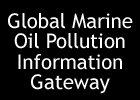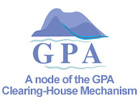The
Global Marine Litter Information Gateway is one of nine pollutant
source category nodes of the UNEP
GPA Clearing-House Mechanism.
This
mechanism is intended to provide "a one-stop method that
promotes the advertising, discovery, access, dissemination and
use of GPA related information and data held by numerous organizations
using the decentralized capabilities of the Internet".
There are different kinds of information nodes, and various
approaches:
- Pollutant
Source Category Nodes [GPA list]
– see also below
- Regional
Nodes [GPA list]
- National
nodes [GPA list]
- Other
GPA Nodes [GPA list]
Pollutant
source category nodes presently available:
- Sewage
[Lead Agency: World Health Organization, WHO. Node provided
by WHO and Sanitation Connection Partners];
- Persistent
organic pollutants [ Lead Agency: UNEP. Node provided
by UNEP];
- Radioactive
substances [Lead Agency: International Atomic Energy
Agency, IAEA. Node provided by IAEA];
- Heavy
metals [Lead Agency: UNEP. Node provided by UNEP];
- Marine
litter [Lead Agency: International Maritime Organization,
IMO];
- Oils
(hydrocarbons) [Lead Agency: UN International Maritime Organization,
IMO];
- Nutrients
[Lead Agency: Food and Agriculture Organization, FAO. Node
provided by FAO];
- Sediment
mobilization [Lead Agency: Food and Agriculture Organization,
FAO. Node provided by FAO];
- Physical
alterations and destruction of habitats [Lead Agency:
UNEP].
Regional
nodes presently available:
-
UNEP Caribbean Environment Programme [CEP];
- South
Pacific Regional Environment Programme [SPREP];
and
- Protection
of the Arctic Marine Environment [PAME]).
National
nodes (National action programmes) presently available:
Other
GPA nodes presently available:
The
four main GPA Clearing-House approaches are:
Pollutant
Source Categories. Designated by the GPA, along with a
designated lead agency that is responsible for the creation
and maintenance of the node for that pollutant source category.
These nodes address the problems of:
Regional
Seas.
The
UNEP regional seas programmes have been incorporated into
the Clearing-House to provide a regional and national framework
and perspectives for the GPA information and data. It is envisaged
that most of the UNEP Regional Seas will become GPA clearing-house
nodes.
Coastal
Zone Management Framework. While looking at the structure
and approach to implementing the GPA, there is a need incorporate
the coastal zone management framework into the implementation
strategy. This model will be incorporated into the structure
of the GPA Clearing-House to facilitate a logical approach,
especially for professionals, to the access of information
and data.
Economic
Sectors Nodes. Another approach to categorizing GPA related
information is by economic sector. Using economic sectors
— Industry, Agriculture, Energy, Trade and Services,
Households, Transport, Tourism, Harbour Development, Urban
Development, Forestry, River-basin Management, and Coastal
Zone Management — as a framework is especially useful
for users to quickly find needed information using a common
and intuitive approach.
|



